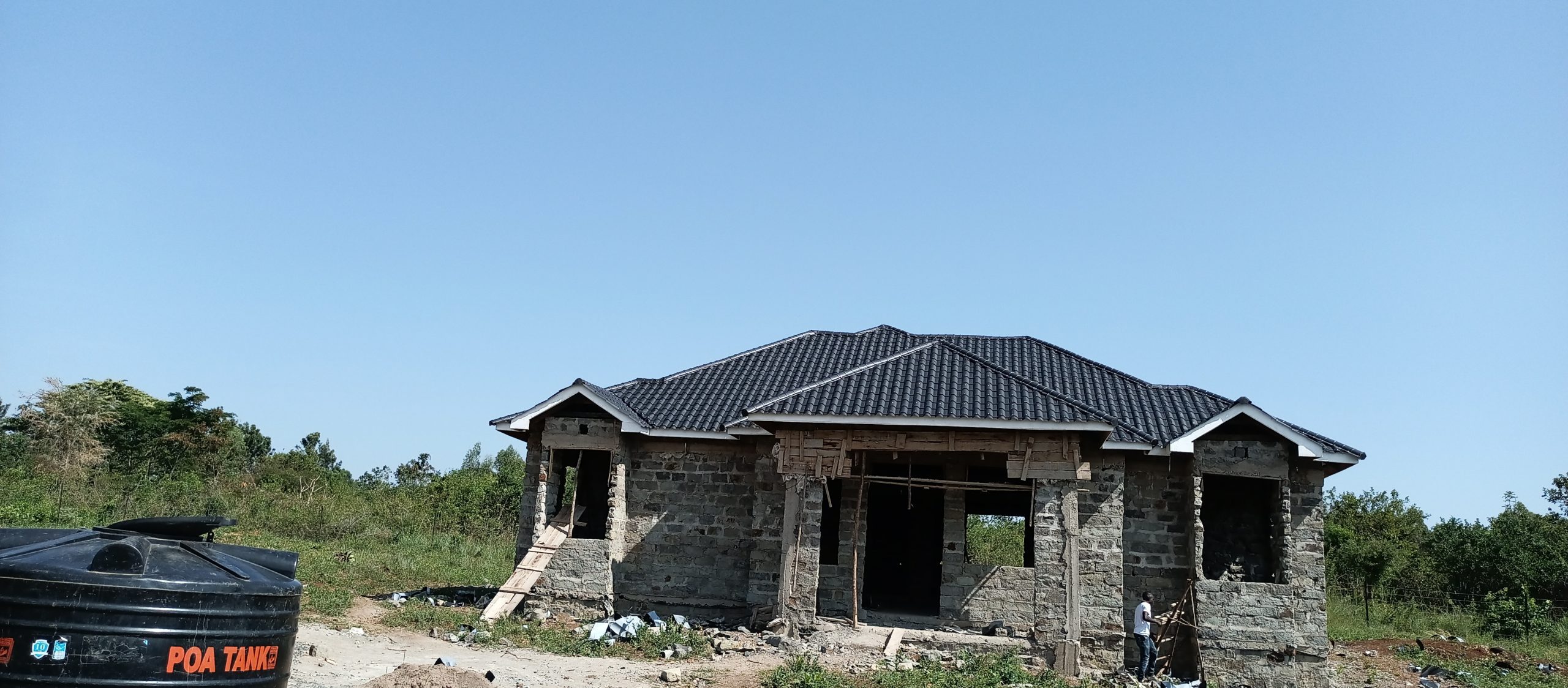How to Get County Permits for Construction in Kenya
Get your construction project started the right way with this detailed guide on county permits for construction in Kenya. Learn about building approvals, development permits, required documents, timelines, and fees across major counties like Nairobi, Kiambu, Mombasa, and Kisumu.
Introduction
How to Get County Permits for Construction in Kenya
County permits for construction in Kenya are essential legal approvals issued by county governments to ensure buildings meet safety and zoning standards. Without them, projects risk being stopped or demolished. Whether you’re building a house, apartment, or commercial property, getting the right permits saves time, money, and future legal problems.
This guide explains how to apply for county permits for construction in Kenya, covering document requirements, fees, timelines, and steps across major counties. It also includes professional tips and internal links to related topics on approvals, land permits, and compliance processes.
What Are County Permits for Construction in Kenya?
County permits for construction in Kenya are legal authorisations that allow you to begin a building or development project after ensuring it meets safety and planning laws. These permits are issued by the respective county governments under the Physical and Land Use Planning Act.
Who Issues Them and Why They’re Required
Each county government, through its physical planning department, issues construction permits. The aim is to control development, prevent unsafe structures, and ensure projects align with county zoning plans. National agencies like the National Construction Authority (NCA) and the National Environment Management Authority (NEMA) also oversee specific approvals.
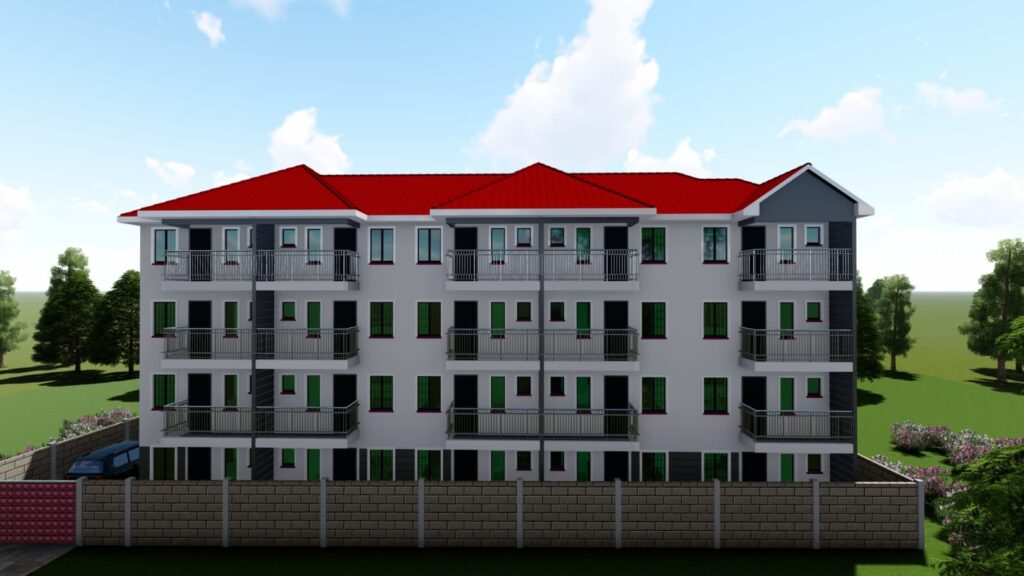
Distinction Between Building Approval and Development Permit
A building approval focuses on structural and architectural design compliance, while a development permit deals with the change of land use or new land developments. For instance, converting residential land into a commercial property requires a development permit. Both are necessary for large projects.
Legal Framework Behind County Permits
The main legal frameworks include the Physical and Land Use Planning Act (2019), Building Code (2020), and NCA Regulations. These laws empower counties to enforce construction standards and inspect ongoing works. Complying ensures safety, quality, and insurance validity for your project.
Types of Approvals and Development Permits Required
Each construction project may need multiple approvals depending on size and location. Understanding them early helps avoid delays and additional costs.
Building Plan Approval
This is the most common requirement for any structure. It ensures your architectural and structural drawings comply with county building codes. The plans must be stamped by registered professionals and submitted to the county’s physical planning department before construction starts.
Development Permit or Change of Use
If your land’s current zoning differs from your intended use—say, changing residential land to build a guest house—you must apply for a change-of-use or development permit. Counties such as Kiambu and Mombasa strictly enforce this process.

Additional Specialist Permits
Depending on your project’s scope, you might need extra permits such as environmental impact assessments from NEMA, fire safety clearances, wayleave approvals, or water and sewer connection permits. These ensure your building meets environmental and utility safety standards.
Pre-Application Checklist: Documents and Professionals Needed
Before applying for county building approval, prepare the required documentation and involve licensed experts. Having everything ready speeds up your approval timeline.
Proof of Land Ownership and Survey Documents
You’ll need a valid title deed or lease, current land rates clearance, and a survey plan from the Survey of Kenya. These confirm ownership and legal boundaries. Counties won’t approve applications without authentic land documents.
Professional Drawings and Endorsements
Architectural and structural drawings must be signed and stamped by registered professionals. The Board of Registration of Architects and Quantity Surveyors (BORAQS) and Engineers Board of Kenya (EBK) verify professionals’ licenses. Engaging unregistered designers often leads to rejection.
Environmental Reports and Supporting Documents
If your construction project has potential environmental effects, you’ll need a NEMA project report or full Environmental Impact Assessment (EIA). For small residential projects, a simplified report may suffice, while commercial buildings require a detailed EIA.

Step-by-Step Application Process Across Counties
The process of obtaining county permits for construction in Kenya follows similar steps across major counties, though some requirements vary slightly.
Step 1 – Engage Professionals and Prepare Documents
Hire an architect, structural engineer, and contractor before submitting any application. They will guide you on required forms, documents, and drawings for your project type.
Step 2 – Submit Application to County Offices or Online Portals
Counties like Nairobi and Kiambu allow online submission through their e-permit systems. In Mombasa and Kisumu, physical submissions may still be required. After submission, you’ll receive an invoice for scrutiny and approval fees.
Step 3 – Technical Review and Site Inspection
Your plans undergo review by county technical committees covering structural, health, fire, and zoning standards. They may conduct site visits to verify land details and project alignment before granting approval.
Step 4 – Payment and Issuance of Permit
Once your documents are approved, you pay the required fees, after which the county stamps and issues your building permit. The approval is typically valid for 12 months, after which it can be renewed if construction hasn’t started.
Fees, Timelines, and Common Delays in Kenya Counties
Application fees and approval timelines vary depending on the county, project type, and size.
Typical Fees and Payment Process
Most counties calculate fees based on project value or floor area. Residential projects may cost between KSh 30,000 and KSh 100,000, while large developments can exceed KSh 500,000. Fees cover plan approval, inspection, and occupation certificates.
Approval Timelines Across Counties
In Nairobi, approvals typically take 2–6 weeks if documents are complete. In Kiambu or Kisumu, it can stretch to 8 weeks due to manual reviews. Delays usually arise from incomplete submissions or missing professional stamps.
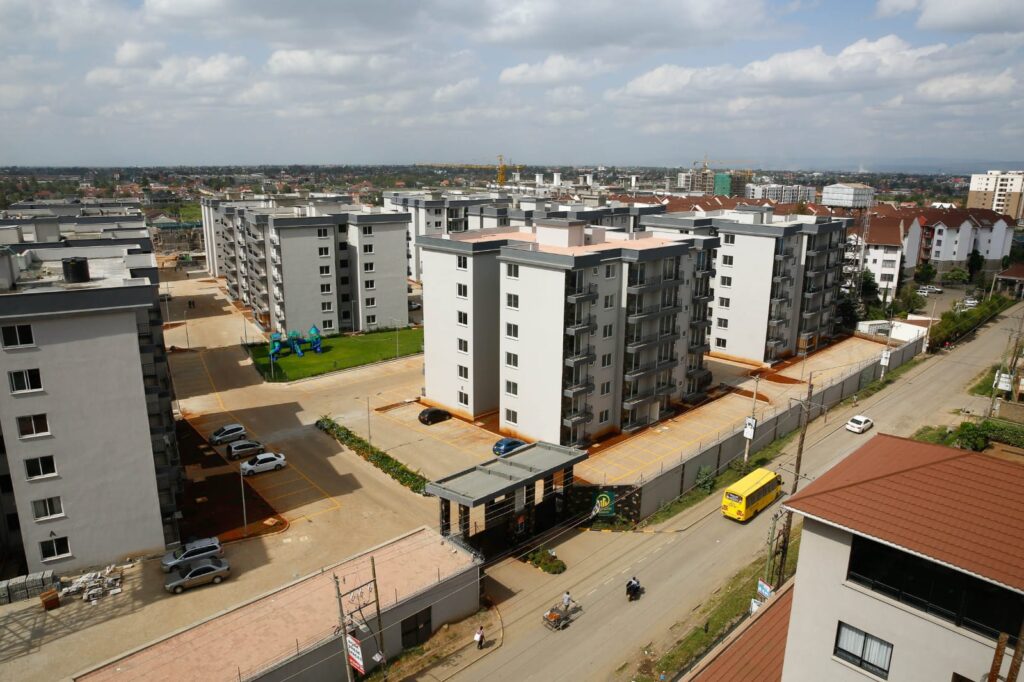
How to Avoid Delays and Rejections
Submit all documents at once, ensure professionals are registered, and maintain follow-ups with the county office. Also, avoid starting construction before obtaining permits—counties can issue stop orders or demolish unauthorised works.
County-Specific Notes and Portals
Different counties in Kenya have unique requirements and online systems for construction permits.
Nairobi City County
Nairobi uses an online e-permit system where applicants upload plans, make payments, and track progress digitally. Weekly approvals are published on the county portal, ensuring transparency.
Kiambu County
Kiambu’s planning department allows both online and manual submissions. Applicants must also clear land rates before permits are processed. Their portal provides updates on pending applications and approvals.
Mombasa and Kisumu Counties
In Mombasa and Kisumu, most processes remain manual. Applicants must submit hard copies of plans to the county planning office. However, both counties are gradually shifting toward digital submissions through e-construction systems.
After Approval – Inspections, Compliance, and Occupancy
Getting approval isn’t the final step. Counties conduct follow-up inspections to ensure construction follows approved designs.
Commencement and Compliance Inspections
Before breaking ground, you must notify the county and NCA of your construction start date. County inspectors will visit periodically to verify work matches approved plans.
Final Inspection and Occupation Certificate
Once construction is complete, request a final inspection. If the building meets all standards, you’ll receive an occupation certificate. This document confirms your structure is safe and legally habitable.
Penalties for Non-Compliance
Unauthorised construction can lead to heavy fines, stop orders, or demolition. Always display your permit on-site and maintain regular contact with your county’s building inspector.
Hiring Registered Professionals and Ensuring Quality
Working with qualified professionals is not optional—it’s a legal requirement and ensures your project meets standards.
Verifying Registration of Architects, Engineers, and Contractors
Always verify your architect or engineer’s credentials through BORAQS or EBK. For contractors, confirm registration on the NCA database. Using unregistered professionals can lead to permit rejection or future safety issues.
Importance of Signed Contracts and Liability Clauses
A written contract protects both the client and contractor. It should define scope, timelines, payment terms, and quality expectations. Including clauses on adherence to approved plans avoids disputes later.
Quality Control and Insurance Coverage
Ensure your professionals conduct routine quality checks and have valid insurance. Professional liability insurance protects you from losses caused by design or construction errors.
Common Construction Scenarios and How Permits Apply
Different types of projects require slightly different county approvals.
Renovations and Extensions
Minor renovations, like kitchen or bathroom remodels, may not need full building permits but must follow structural safety rules. Major extensions require fresh approvals since they alter the original plan.
New Residential Buildings
For a new home, you’ll need both building approval and NCA registration. Counties like Kiambu and Nairobi require site plans, drainage layouts, and proof of land ownership before approving your design.
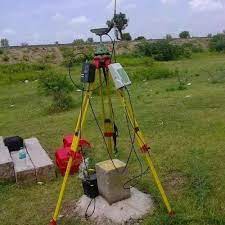
Commercial or Multi-Storey Projects
Commercial projects demand extra clearances, including NEMA approval and fire safety certification. They also undergo more inspections to ensure compliance with accessibility and parking standards.
Role of County Governments in Regulating Construction in Kenya
County governments are central to managing all construction projects within their territories. Their departments ensure that new buildings comply with development control policies, land-use zoning, and safety laws. Through this oversight, counties help balance growth with sustainability, preventing uncontrolled or unsafe structures. The system allows investors to build with confidence while protecting communities from unregulated developments.
County Planning and Development Control
Every county in Kenya operates a physical planning department responsible for reviewing and approving construction plans. These departments examine design drawings, structural calculations, and land-use conformity before issuing permits. Their aim is to ensure developments fit within urban master plans and comply with the Building Code of Kenya. For instance, Nairobi and Mombasa have strict zoning regulations that determine how residential, commercial, and mixed-use buildings are distributed. Counties also coordinate with national agencies to maintain uniform safety standards. Developers must therefore align their designs with both county and national regulations to avoid delays or penalties. The process fosters orderly development that supports infrastructure capacity and environmental sustainability.
Coordination with Other Regulatory Bodies
County governments rarely operate in isolation. They collaborate with the National Construction Authority (NCA), NEMA, and fire departments to verify that each project meets all necessary conditions. For example, before issuing a construction permit, the county may require NEMA’s environmental impact assessment report and NCA’s registration of the contractor. This coordination ensures that no aspect of public safety or environmental care is overlooked. It also enhances accountability and promotes quality construction practices across Kenya’s urban and rural areas. Developers who understand these inter-agency linkages can plan efficiently and avoid compliance conflicts later in the project.
Enforcement and Monitoring of Construction Projects
Once a building permit is issued, counties continue to monitor construction progress. Inspections are conducted at different stages — from foundation to roofing — to confirm compliance with approved plans. If deviations occur, stop orders may be issued until corrections are made. Counties like Kiambu and Nakuru have increased on-site checks to prevent unauthorised structural changes. Enforcement ensures safety, protects the public, and maintains the value of surrounding properties. Developers who cooperate with inspectors often experience fewer legal issues and smoother handovers upon project completion.
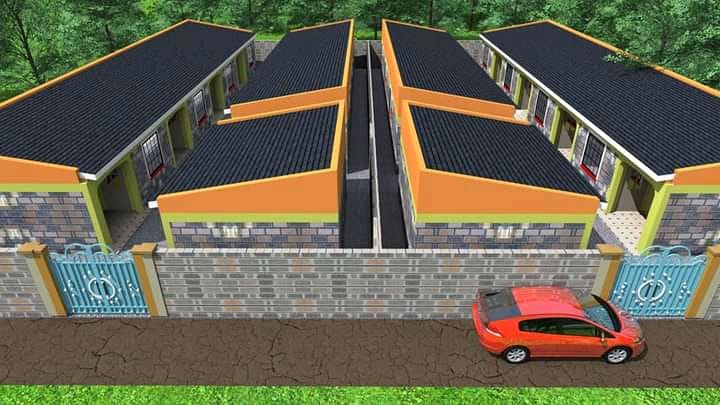
Environmental and Safety Compliance for Building Permits
Kenya’s construction regulations emphasise sustainability and safety, and counties play a big part in enforcing both. Any new project must meet environmental standards while ensuring structural safety. Compliance protects not only the developer’s investment but also the well-being of residents and the surrounding ecosystem.
Environmental Impact Assessment (EIA) Requirements
Before a county approves any major development, an Environmental Impact Assessment (EIA) report must be submitted. This report, prepared by licensed environmental experts, evaluates how the project may affect air, water, soil, and biodiversity. NEMA reviews it before issuing clearance, which the county then uses to finalise the permit. For example, a developer building near a river must outline how they will manage waste and prevent contamination. Skipping this process can result in automatic rejection or fines. Counties have adopted strict policies to ensure EIA compliance aligns with sustainable development goals.
Structural Safety and Building Code Standards
All counties require adherence to the Building Code of Kenya and international safety guidelines. Engineers must ensure that the design considers factors like soil strength, wind resistance, and fire protection. Safety audits are conducted before and during construction to confirm that materials and workmanship meet acceptable standards. In Nairobi, developers must install fire exits, proper drainage, and reinforced structures for high-rise buildings. Compliance prevents accidents, protects workers, and builds public trust in new developments.
Health and Safety Audits During Construction
During construction, counties conduct regular health and safety audits. Inspectors check whether the site provides proper protective gear, safe scaffolding, and emergency plans. This process is crucial in reducing worksite accidents and ensuring worker welfare. Counties also educate contractors on occupational safety standards and require reports on incident prevention. Developers who maintain safety compliance often enjoy smoother approval for future projects, as their reputation for quality builds trust among regulators.
Common Mistakes That Delay County Building Approvals
Many applicants face frustrating delays due to avoidable mistakes. Understanding and avoiding these errors can save time, money, and stress.
Incomplete or Incorrect Documentation
The most common reason for delayed approvals is missing paperwork. Counties require several documents — ownership titles, land rates clearance, EIA reports, and approved architectural drawings. Submitting outdated or unsigned versions leads to automatic rejection. To prevent this, developers should review county checklists carefully before submission. Hiring a professional consultant to prepare and verify documents also helps maintain accuracy and compliance.
Ignoring Zoning and Land-Use Regulations
Counties like Kiambu and Machakos enforce strict zoning laws that restrict the type of construction allowed in specific areas. For instance, building a commercial structure in a residential zone may require a “change of user” approval before proceeding. Ignoring these regulations results in suspension or demolition orders. Developers should confirm zoning classifications at the planning department before applying for a permit. Proper zoning alignment ensures approvals are granted quickly without disputes.
Delayed Fee Payments and Communication Gaps
Late payment of assessment or inspection fees often slows down permit processing. Counties operate on tight budget cycles and won’t progress an application until all fees are cleared. Furthermore, lack of communication between applicants and county officers can stall reviews. Developers should maintain regular contact and promptly address any feedback or correction requests. Efficient communication ensures applications move faster through approval stages.

Importance of Professional Consultants in the Approval Process
Working with qualified professionals significantly increases the chances of smooth approval.
Role of Registered Architects and Engineers
Registered architects and engineers understand the technical requirements for county submissions. They prepare drawings that comply with both the Building Code and county-specific planning guidelines. Their expertise minimises errors and ensures designs meet safety and zoning standards. For large developments, these professionals coordinate with surveyors and planners to prepare complete application packages.
Project Management and Compliance Support
Professional consultants not only design but also guide clients through the entire approval process. They liaise with county officers, respond to comments, and monitor approval progress. Their experience allows them to anticipate and resolve compliance issues before they become major delays. In counties like Nairobi, where online submissions are standard, consultants handle digital uploads and ensure proper formatting.
Cost Efficiency and Risk Reduction
Although hiring professionals adds cost, it prevents bigger losses caused by rejections or redesigns. Consultants ensure that all documents are accurate, reducing the need for repeated submissions. They also help developers plan construction schedules around approval timelines, avoiding wasted resources. Their expertise leads to faster approvals and higher project success rates.
Digital Transformation in County Permit Applications
Kenya is rapidly digitising its county approval systems to make construction permits more accessible and transparent.
The E-Construction Permit System
Nairobi County pioneered the e-construction permit platform, allowing developers to submit and track applications online. This platform eliminates unnecessary paperwork and reduces human interference that often causes corruption and delays. It integrates all departments — from planning to engineering — into one streamlined process.
Expansion of Digital Systems in Other Counties
Counties such as Mombasa, Kisumu, and Kiambu are adopting similar systems to simplify approval workflows. These platforms allow online payment of fees and digital communication with officers. As digital adoption spreads, developers can manage multiple projects remotely, enhancing convenience and accountability.
Benefits and Challenges of the Digital Shift
The shift to digital systems has improved transparency and turnaround times. However, challenges like poor internet connectivity and limited staff training still affect some counties. Despite these issues, digital transformation marks significant progress in Kenya’s construction regulation landscape. Developers who embrace technology early are likely to experience faster and smoother approval journeys.
Conclusion
County permits for construction in Kenya are the foundation of safe and lawful building. They protect your investment, ensure compliance with national laws, and improve property value. Whether you’re developing in Nairobi, Kiambu, Mombasa, or Kisumu, always follow the full process—from documentation to inspections. Doing so saves time and prevents costly delays or demolitions.


